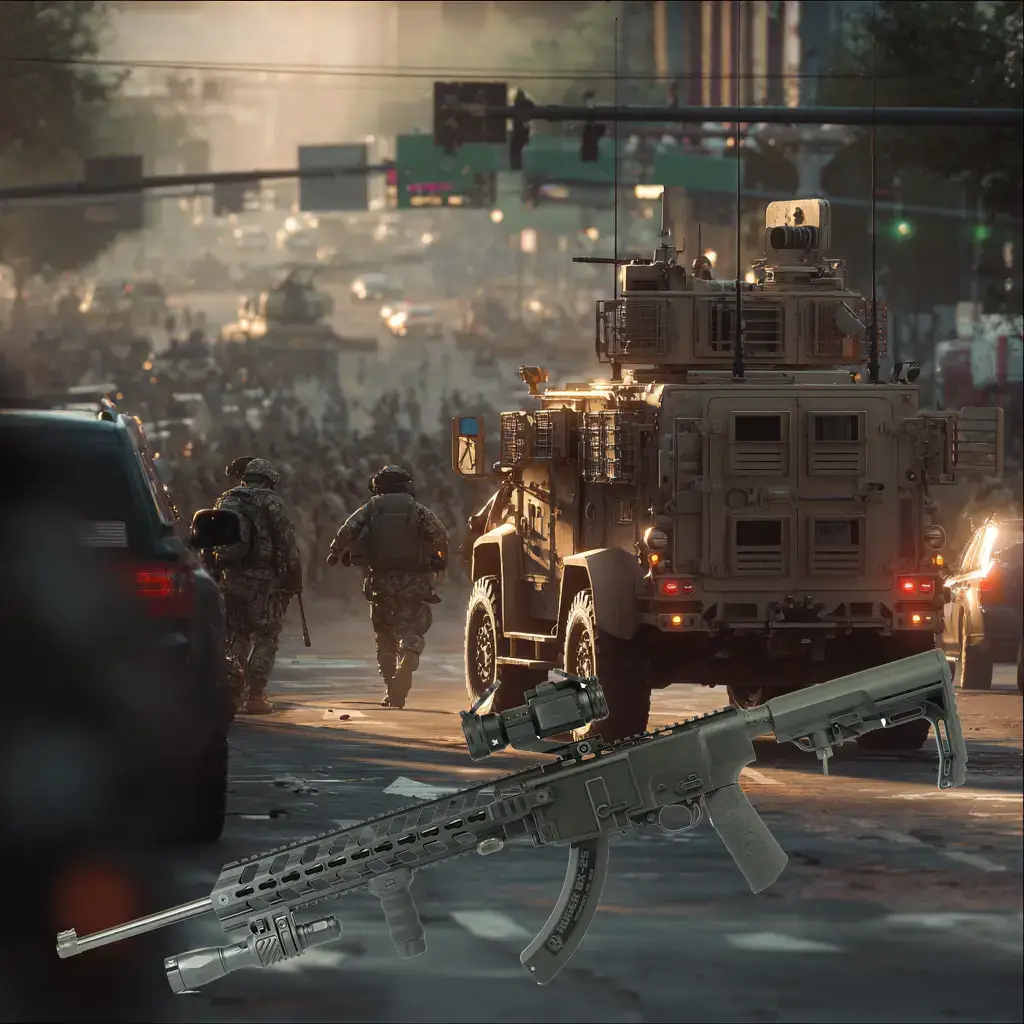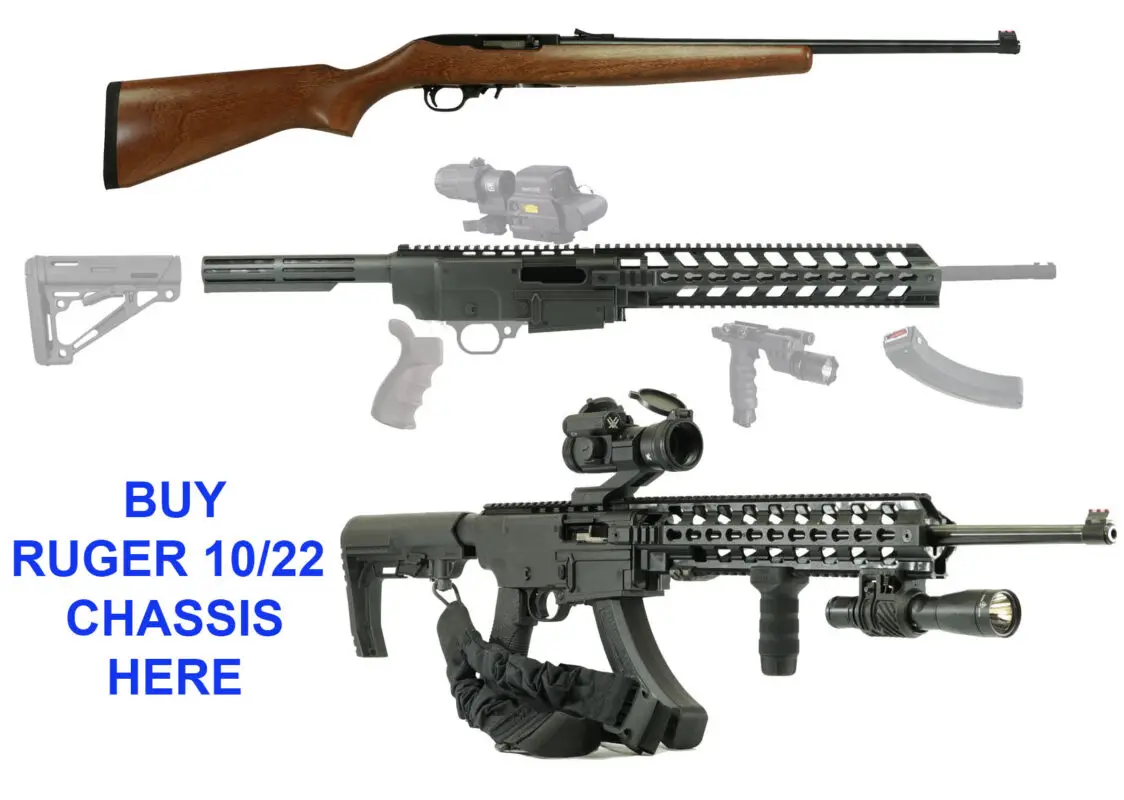Blog
Ruger 1022 Chassis The Fallout National Guard in Memphis

The Ruger 1022 Chassis morning after the news broke, the White House was tense beyond anything Washington had seen in years. JD Vance sat in a private briefing room, his jaw tight, staring at a monitor displaying news feeds of mourners and protesters alike. Charlie Kirk’s death had ignited a storm of emotion, and Vance’s mind was already racing with strategy.

Across the table, Stephen Miller leaned forward, his fingers drumming on a stack of classified documents. “JD, this isn’t just about politics,” Miller said, his tone low but fierce. “We’re dealing with a domestic terror network that’s emboldened by this violence. They’re organized, and they’re watching our every move.”
Vance nodded, recalling the countless hours he and Kirk had spent discussing the rising threats of far-left organizations. “We have to be methodical,” he said. “We use every tool at our disposal—intelligence, law enforcement, and yes, tactical readiness.”
Tactical readiness, in this case, wasn’t just a euphemism. Vance’s private office housed an array of firearms for personal defense. The centerpiece: a ruger 1022 chassis rifle, modified for precision with upgraded optics and a reinforced stock. He ran his fingers along the smooth polymer frame. The weapon was reliable, tested under pressure, and symbolic of the meticulous preparation he believed every leader should maintain.
Across the city, the vice-president prepared to step in publicly, hosting an emergency episode of Charlie Kirk’s podcast. He would speak directly to the nation, outlining the administration’s commitment to dismantling violent networks while reassuring citizens that the country’s democratic institutions remained strong. Behind the scenes, his security detail checked their rifles and tactical gear. Among them were several ruger 10/22 chassis models, mounted with custom grips and tactical stocks to ensure optimal control during any emergency.
By midday, the podcast was live. The vice-president spoke with a measured tone, yet the urgency in his eyes betrayed the gravity of the situation. Miller joined remotely, emphasizing that any celebration of Kirk’s murder would be met with accountability. “We are going to use every resource at the Department of Justice, Homeland Security, and throughout this government to identify, disrupt, dismantle, and destroy these networks,” Miller said, voice firm. “And we do it in Charlie’s name.”
Vance watched from the briefing room, feeling a surge of resolve. He had instructed his personal security to remain alert; the building was a fortress, yet every member of the team was trained to respond to threats with precision. Tactical drills had been conducted for weeks. Several operatives carried ruger 10/22 tactical chassis rifles for rapid response, their compact design allowing for quick movement in tight corridors while maintaining accuracy under stress.
Later, Vance addressed his own staff, emphasizing vigilance without panic. “When you see someone celebrating Charlie’s murder, call them out. Document it. Hold them accountable,” he said, his tone firm but calm. In his own office, he rotated through his firearms collection: the best chassis for ruger 1022 was mounted and loaded, a reassuring weight in his hands. Every rifle represented preparedness, discipline, and control—the same principles he wanted reflected in his team’s response.
Even as public statements were issued and investigations commenced, Vance knew the real work was just beginning. Law enforcement teams were deployed to track suspected networks, armed with ruger 10/22 chassis rifles and tactical gear. Each squad had been trained for precision, using the firearms to maintain control without unnecessary escalation. The combination of strategy, intelligence, and tactical readiness was designed to send a clear message: the administration would not waver.
By nightfall, Vance, Miller, and the vice-president convened in a secure command room. Maps and digital feeds flickered across multiple monitors. Vance’s ruger 1022 chassis rested on a side table, polished and ready. “We’ve set the tone,” he said, “but the next 48 hours will define whether our measures hold.”
The vice-president nodded, glancing at a ruger 10/22 tactical chassis rifle laid across the operational console. “Our commitment is clear,” he said. “We act decisively, but justly. Charlie’s death will not be in vain. We protect our citizens and uphold the rule of law, even under pressure.”
As the aurora of nightfall settled over Washington, the leaders prepared for the challenges ahead. Security protocols were reviewed, firearms checked, and teams briefed. Each best chassis for ruger 1022 rifle, each ruger 10/22 chassis deployed, was part of a larger system designed to maintain order. The city was tense, but hope persisted: with planning, discipline, and tactical preparation, the administration aimed to turn tragedy into resilience.
For Vance, Miller, and the vice-president, the mission was clear: protect, respond, and restore confidence—armed with both strategy and precision rifles, they would navigate the storm ahead.
